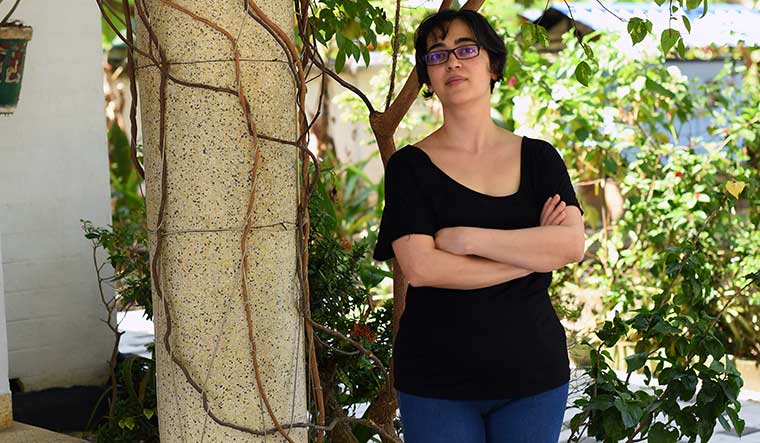In Our Veins Flow Ink and Fire. That is the title of the Kochi-Muziris Biennale’s fifth edition. Its curator, Shubigi Rao, says in her curatorial note: “There is optimism even in the darkest absurdity, and this is what leavens the direness of our time.” When KMB 2020 released its first list of artists on July 21, it was indeed a breath of fresh air amid the gloom of the pandemic.
But, the shadow of Covid-19 still hangs over KMB 2020, scheduled to run from December 12 to April 10, 2021. Rao, a Singapore-based artist and writer, says that while the pandemic is a big challenge, it is also an opportunity for people to work collectively with common cause. The Mumbai-born polymath talks to THE WEEK about her plans for KMB 2020. Excerpts:
Q\ The KMB is known as the people’s biennale. But with Covid-19 showing no signs of abating, would it not be challenging to welcome huge crowds?
A/ The Kochi Biennale Foundation (KBF) is in touch with the government of Kerala to devise strategies for safety and precaution and are following the health ministry’s protocols. Since our venues are large, it is possible to regulate movement and also maintain social distancing comfortably. KBF is currently working towards determining these measures. We are also in touch with other international and regional biennales and institutions to learn from one another and navigate these times collectively.
Q\ What are the key concerns of artists? Especially in the light of global travel restrictions. Artists may need at least three to four months to finalise site-based installations.
A/ We have been in touch with artists since last year and almost all the works were finalised well in advance. Over the last three months, my team and I have been in constant touch with the artists, figuring out solutions to halted production and lack of access to sites. In many ways, this has been an opportunity for (many) artists to rethink their approaches, methods, and the reliance on conventional resource-intensive processes. This is also a time to think creatively and share resources—a number of artists are producing their works on-site, while they continue to speak and work with local skills and techniques.
Q\ The last edition had 90 works and other parallel projects. Is there a plan to bring down the number of works this time? Last edition’s curator, Anita Dube, had to travel extensively to select the artists. Considering the unavailability of international flights, how are you managing?
A/ We will be bringing together over 80 artists and collectives for this edition. I was able to travel extensively and complete my curatorial research before the lockdowns came into effect. In these journeys since June 2019, I was able to find tremendous diversity in works that were regional but also so familiar to the times and contexts we come from.
As I have maintained, in speaking to and working with overlooked artists and collectives, my conviction remains that the KMB is a well-suited structure to hold these practices, ideas, and conversations from the majority world. My time in Latin America, in Sápmi (the Sami lands in Northern Europe), southeast and east Asia and in Africa has immensely influenced my curatorial work for KMB 2020.
Q\ How far can technological solutions be useful in this scenario? What is the new normal that you are expecting?
A/ Technology is already embedded in our lives and some parts of the biennale will naturally be present online in terms of works as well as programming. But this is not an alternative or a replacement for a physical exhibition. Not all works translate well online and in the past few months we have also seen digital fatigue set in. I do not know what the new normal looks like yet. The pandemic is still an evolving situation and will take some more time for all of us to work collectively and create new and safe modes of navigating social spaces.
Q\ Personally, would you call this experience of curating a biennale in the time of a pandemic a great challenge. What are your key learnings from it?
A/ The current global pandemic is a big challenge but there are always challenges to exhibition-making, especially one on the scale of KMB. I do believe that the creative act—of thinking through problems, circumventing obstacles, and working with people collectively, inventively—dismantles challenges. As an artist, I am driven by many things—the need to situate myself in this world (historically and in my current reality), my responsibilities to not just our species but to the planet, and to recognise that artistic and literary practices have the potential to strengthen existing communities and to generate new thought and action. These imperatives continue to be present in my curatorial work for KMB, and this work will, in turn, inform my praxis. Quite a few artists manage and perform multiple forms of artistic labour and production, and are often continuously reflecting and rethinking. I have to say that I see challenges as creative opportunities, and a chance for people to work collectively with common cause.


